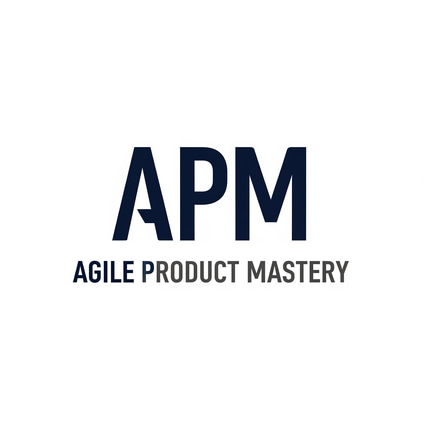The Truth About Agile Transformations (From Someone Who’s Been There)
Hard-won lessons from real Agile transformations in banking. What works, what doesn’t, and what I’d do differently if I had to do it all again.
AGILECOACHINGLESSONSLEARNTAGILE PRODUCT MANAGEMENT
Written by: Matt Gregory - Founder Agile Product Mastery
5/15/20253 min read


When I first led an Agile transformation, I thought success meant scale.
We launched training programs, rolled out Scrum across every squad, got Jira humming, introduced rituals across dozens of teams, and presented glossy dashboards to the execs. On paper, it looked like a win.
But deep down, I knew something was off.
Despite all the frameworks, ceremonies, and tooling, teams were still struggling to deliver meaningful outcomes. Middle managers were disengaged. The execs who once championed the effort were now questioning the return on investment. And retros? They became performative checkboxes.
It wasn’t until a few years, and several transformations later that I realised the truth: we were changing the mechanics, not the mindset. And without the mindset, the mechanics won’t stick.
So if I had to do it all again, here’s what I’d do differently, not because those early attempts were failures, but because each one taught me what really matters.
1. Start Smaller, Go Deeper
I used to think success meant breadth, how many squads we could “flip” to Agile.
Now I know depth is where the real transformation happens.
One high-performing team that truly gets it will outdeliver ten teams that are just following the script. A small group that deeply embraces agile principles becomes your proof point, a beacon of possibility for the rest of the organisation. It creates pull, not push.
If I could go back, I’d invest more time in fewer teams, building deep capability and letting their success tell the story.
2. Anchor Everything to Business Value
In hindsight, some of our transformations looked like they were done for Agile, not because of a business need.
We’d talk about Agile maturity. We’d talk about roles and velocity. But we didn’t always connect those changes back to the things the business actually cared about, like reducing time-to-market, simplifying compliance, or increasing risk transparency.
Today, I insist that every transformation starts with a pain point the business already feels. Agile is the means, not the end.
3. Bring Middle Management Into the Tent
If execs are the sponsors and teams are the engines, middle management is the glue.
And in my early transformations, we left them behind.
Too often, Agile transformations treat mid-level managers as blockers to be “removed” or “retrained”, forgetting they are the ones who navigate the messy middle, translate strategy into action, and hold deep institutional knowledge.
Now, I bring them in early. I show them how they fit. I give them space to lead differently.
Because if they’re not with you, the transformation becomes a surface-level performance.
4. Be Honest About the Time It Takes
Agile transformations don’t happen in quarters — they happen over years.
Looking back, I sometimes sugarcoated this. I’d frame change in “12-week increments” or “pilot programs” to ease exec fears. But when things got tough, and they always do, leaders lacked the stamina to push through.
Now, I set a different expectation. I tell execs: if you’re serious about agility, commit for 18–24 months. Expect discomfort. Budget for capability. Stay close to the outcomes, not just the ceremonies.
Agile isn’t a silver bullet. It’s a shift in how the organisation thinks, learns, and leads.
5. Call Out Agile Theatre Early
At some point, every transformation faces this: the appearance of agility without the substance.
Stand-ups that are just status updates. Retros with no follow-through. Velocity metrics gamed to hit reporting targets. Tools overloaded with features that no one uses.
That’s Agile theatre, and it’s dangerous because it creates a false sense of progress.
Today, I cut it off early. I strip away anything that doesn’t create flow, clarity, or learning. If a ceremony isn’t serving the team, we rework it. If a metric doesn’t guide decisions, we drop it.
Real agility is messy. It’s not a perfect board or polished burndown chart, it’s a team empowered to adapt and deliver.
My New Playbook: The 3Cs of Transformation
Over time, I’ve come to define my transformation approach with three key pillars
Clarity: What problem are we solving, and how will we know we’ve made progress? Committment: Are leaders truly backing the change with time, trust, and space?
Coaching: Are we building the internal muscle to sustain this change long after the consultants leave?
You don’t need a wall-to-wall SAFe implementation or a 6-figure tooling stack. You need these three things, consistently, transparently, and patiently delivered.
Final Thought
Agile transformation isn’t a rollout. It’s a relationship with change.
And like all relationships, it takes time, truth, and care. You don’t earn agility through training alone — you earn it through practice, reflection, and the courage to admit when something isn’t working.
If you’re about to lead, or are stuck inside, a transformation right now, here’s my invitation:
Start smaller. Go deeper. Speak the language of outcomes. Trust your people more than your process. And above all, keep listening.
Want more?
I share practical tools, stories, and frameworks every week at Agile Product Mastery. Subscribe to the blog or grab one of my free templates to build transformation that lasts.
© Agile Product Mastery — Build a career that scales. Not one that burns out.
Powered by Baltimore Advisory Pty Ltd — ABN 97 678 312 475 — All rights reserved
Follow us on LinkedIn
